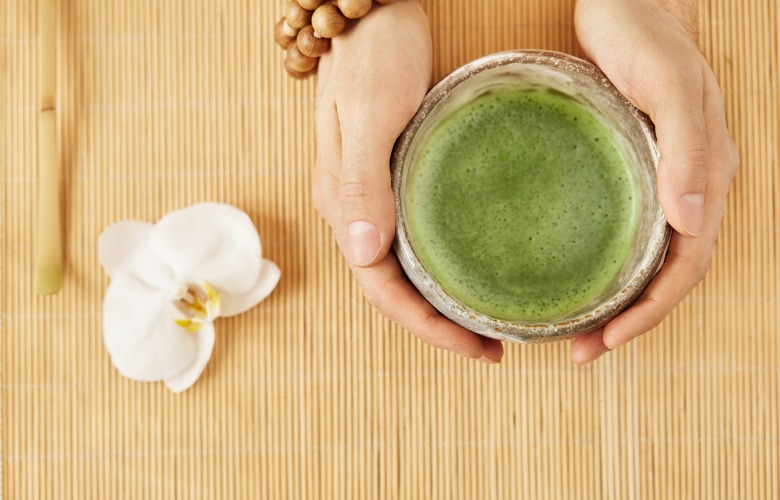Adaptogens 101
How do Adaptogens work in the body?
Because there are several dozen commonly used adaptogens, there isn’t one single explanation for how they all work. Each has its own distinct chemical makeup and particular strengths to be used for. While many of these herbs have a primary active compound that has been isolated and identified, the complex chemistry of the total plant still can’t be discounted from how they work.
The depth of scientific research into adaptogens varies, with more popular herbs naturally getting more attention. While many questions remain about how adaptogens interact with our bodies, there are some main mechanisms that have been proposed.
The HPA axis, short for hypothalamic-pituitary-adrenal, appears to be one of the key sites of interaction for adaptogens.(1) The HPA axis is essentially the command center of the body’s stress response. It is the intersection of the central nervous system and the ‘traffic signaling’ of stress hormones such as cortisol. Animal studies on several adaptogens, including siberian ginseng, rhodiola, and schisandra suggest these herbs act directly or indirectly on the HPA axis. They can work by calming the nervous system, decreasing inflammation, reducing oxidative stress, or some combination of the three, alongside other mechanisms. (2)
Adaptogens contain a very long list of active compounds that have been determined to have antioxidant, anti-inflammatory, neuroprotective, cardioprotective effects and much more. Some of them have chemical structures similar to those are bodies make to regulate stress. For example, schisandrin B from the herb schisandra resembles the catecholamines that help regulate adrenal stress response. Also, ginsenosides from ginseng appear similar to the corticosteroids that help moderate activation of the sympatho-adrenal ‘fight or flight’ response.(2)
Several human studies have been conducted on adaptogens, with many showing potential benefit, but much more research is needed to determine what the mechanisms are in each herb, and how they may be used in a clinical setting.
History of Adaptogens
Adaptogens have been used for thousands of years around the world. The theory and practice of their use is extensively documented in Traditional Chinese Medicine and the neighboring Indian tradition Ayurveda. The term adaptogen is fairly new from modern science, but the closest equivalent in TCM might be a Kidney Yang tonic, and in Ayurveda the term Rasayana is used for these restorative, normalizing herbs.(3)
In these traditions, it is not very common to see adaptogen herbs taken by themselves. Typically, these herbs are part of formulas that include other supportive herbs that enhance or balance the effect of the primary herbs. In Ayurveda, for example, the Chyavanprash formula contains ashwagandha, amla, and sometimes dozens more ingredients for a general restorative that is suitable for most people to take regularly.
In modern use, the term adaptogen was conceived in the twentieth century. Russian physician Dr. Israel Brekhman is considered by many to be the ‘Father of Adaptogens’ for his work starting in 1947, identifying the therapeutic potential of Siberian eleuthero ginseng and developing the modern criteria for what qualifies as an adaptogen.(4) He developed formulas based on his research and published his extensive work on plant genetics, phytochemical composition and more that helped build a foundation for current study of adaptogens and other beneficial plants.
Which Ones Are Best For Me?
Everyday a new superfood or miracle herb seems to be introduced as the next panacea. In reality, even though adaptogens share certain general qualities, they are not interchangeable. Each have unique characteristics that are best suited for certain purposes.
Two important points to get started: First, work with a health practitioner that is knowledgeable of the use of herbs and herbal formulas. While popular adaptogenic herbs are considered generally safe taken at recommended doses, inappropriate and excessive use can have potentially adverse health effects in some cases. A practitioner can help make recommendations based on your specific health needs.
Second, instead of chasing the latest exotic trend, stick to herbs that have a good history of both traditional use and modern research. A good short list might include:
- Eleuthero Ginseng: One of the first well-studied adaptogen herbs, ‘Siberian’ eleuthero ginseng may be helpful for physical and mental stamina, quality sleep and strengthened immune function.
- Cordyceps: A unique fungus long-prized in TCM, cordyceps has a wide array of benefits, but may be best known for its ability to fight fatigue and improve exercise performance and endurance, particularly in aerobic exercise.
- Ashwagandha: Exerting a calming effect on the nervous system, ashwagandha can be good for anxiety,stress, and cognitive performance. The group of active compounds, withanolides, also have a strong antioxidant effect, adding to ashwagandha’s overall health benefits.(5)
- Schisandra: known as ‘five-flavor berry’ or Wu Wei Zi in Chinese Medicine, some consider it the eastern equivalent to popular liver protecting herb milk thistle. Schisandra is used in TCM for liver support, but is also beneficial for mental and physical stamina, and improving sexual energy.
- Rhodiola: also known as arctic root for its Siberian origins, rhodiola may be best recognized for its benefits for mood, memory, and focus. Depending on dose, rhodiola may also be useful for exercise stamina as well. Some preliminary clinical studies suggest rhodiola may be helpful for mild depression and anxiety, similar to its traditional use.(6)
How to use Adaptogens
It is best to follow the guidance of an experienced practitioner to select the best herb or formula, and they can help you determine the correct dosage and duration to fit your needs. Some adaptogens are suitable for longer use, while others are best taken for short terms. At a bare minimum, do not exceed the suggested dosage on the bottle. Discontinue use and see your physician if there are any troubling side effects.
1 Altschuler, Lisa ND. “Optimizing the HPA Axis”. August 21, 2014.
2 Panossian, Alexander. “Effects of Adaptogens on the Central Nervous System and the Molecular Mechanisms Associated with Their Stress Protective Activity”. Pharmaceuticals (Basel). 2010 Jan; 3(1): 188-224/
3 Daniells, Stephen. “Confusion Abounds for Adaptogens, says expert”. January 17, 2018. https://www.nutraingredients-usa.com/Article/2018/01/17/Confusion-abounds-for-adaptogens-says-expert#
4 https://en.wikipedia.org/wiki/Israel_Brekhman
5 Bulletproof Staff. ‘12 Best Adaptogens to Feel Less Stressed Get Laser Focused and More’.
6 Weil, Andrew MD. “Rhodiola For What Ails You?” January 3, 2013.

Patrick Postlewait studied English Literature and Environmental Studies before spending the rest of his twenties working on an organic farm growing vegetables and herbs. He spent over a decade in the supplement and health food industry before becoming Brands Manager for Acupuncture Atlanta. When not at the clinic, he spends time with his wife and works as a studio musician and songwriter.



